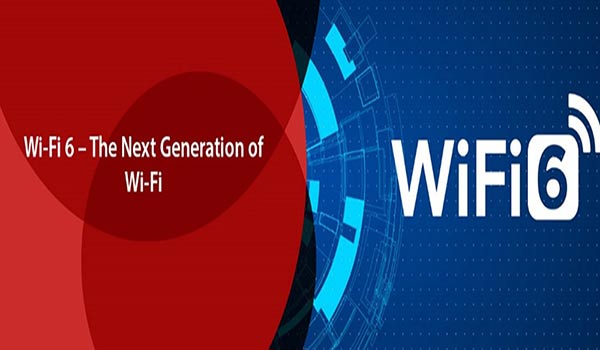
Wi-Fi is an essential part of every modern home. It powers multiple data-hungry devices in an area and connects them wirelessly to the web. It is because of Wi-Fi access that you can complete your daily tasks with utmost efficiency, including paying bills online, shopping, taking virtual classes, consulting with your doctor, or running a business page, etc. Though the current standard of Wi-Fi, also known as 802.11ac, opens up several avenues of convenience already, broadband innovators have gone a little further and introduced the latest generation of Wi-Fi, called Wi-Fi 6. Wi-Fi 6 is far from being available on a commercial scale, yet updated devices and routers with new wireless capabilities are beginning to roll out as we speak. Let’s learn a bit more about this latest internet iteration below.
Table of Contents
What is Wi-Fi 6?
Wi-Fi 6 is a high-efficiency wireless standard that is technically written as 802.11ax and builds on the strength of the previous standard, 802.11ac. This next-generation network pairs a good download speed with less congestion. Meaning, it is 37% faster than its predecessor, and offers 4x more throughput per user device in a crowded area, while at the same time boosting battery life with power efficiency. This updated specification has been created to support hundreds of connected devices, paving the way to smart homes, smart cities, and a smarter future, replete with technologies like AI, IoT, and AR, etc. Why Wi-Fi 6, you might ask? Where are Wi-Fi 5 and Wi-Fi 4? They are right in front of you. The Wi-Fi Alliance has orchestrated this re-naming to help with marketing efforts and come on par with the mobile industry’s over-hyped 5G. So, the standard 802.11ax is Wi-Fi 6, the old 802.11ac is Wi-Fi 5 and the oldest 802.11n is Wi-Fi 4. All the latest devices are expected to carry this labeling once IEEE approves the official rollout, which is set to happen pretty soon.
What are some of its features?
Wi-Fi 6 comes with a more nuanced approach, which supports setting up of smart nodes and boosting multi-user data rates in denser environments. Here are some of its top features:
- Adoption of 1024 QAM technology, or Quadrature Amplitude Modulation, which transmits data on a denser constellation with an amplified speed, giving more bandwidth per user for 8K streaming or VR gaming.
- Low RSSI, or Received Signal Strength Indication, which gives your devices a high-efficiency signal from a wireless access point working on Wi-Fi 6, plus a 4x range expansion.
- Magical feature of OFDMA, or Orthogonal Frequency Division Multiple Access, which encodes digital data on multiple carrier frequencies, allowing you to offload wireless traffic from mobile networks when the reception is spotty, resulting in low overhead and latency.
- More channels and spectrum coverage, including 2.4 GHz and 5 GHz, alongside 1 GHz and 6 GHz, for increased network-to-device communication.
- Integration of TWT, or Target Wake Time, which lets your access point or router specific a timeframe in which individual devices can hop on the network, ensuring longer battery life.
- Backward compatibility included, which means users with older Wi-Fi versions will be able to update and utilize the latest generation.
Though the list of features is far from complete, these are the top specs you’ll find riding on the Wi-Fi 6 technology.
How does Wi-Fi 6 Compare with Previous Standards?
Time to dig a little deeper. What is the difference between this newest and the relatively older standards? Let’s unravel them below.
| Factors | Wi-Fi 4 | Wi-Fi 5 | Wi-Fi 6 |
| Actual Specification Name | 802.11n | 802.11ac | 802.11ax |
| Release Year | 2009 | 2013 | 2019 |
| QAM Modulation | 64 | 265 | 1024 |
| Frequency Bands | 2.4 GHz & 5 GHz | 5 GHz | 2.4 GHz & 5 GHz mainly, converging into 1 GHz to 6 GHz spectrum |
| Data Transfer Rates | 54 Mbps to 600 Mbps across 4 spatial streams only | 433 Mbps on 1 spatial stream with 80 MHz, & 6933 Mbps on 8 spatial streams with 160 MHz | 600 Mbps on 1 spatial stream with 80 MHz, & 9607.8 Mbps on 8 spatial streams with 160 MHz |
| Configuration | Single-User MIMO & OFDM | Single-User MIMO & OFDM | Multi-User MIMO & OFDMA |
As you can see, where Wi-Fi 4 and 5 lack, Wi-Fi 6 shines. It has been particularly designed to allow multi-user connection per single wireless access point (as many as 30), faster data transmission rates in congested environments, wider channel streams, boosted capacity, and improved efficiency. Not only that, the inculcation of the 6 GHz frequency band enables enhanced Wi-Fi growth and fewer chances of interference from legacy networks.
Wrapping Up
Wi-Fi 6 is the next best thing when it comes to wireless networking technology. It is the latest generation of WLAN, delivering higher speeds, better efficiency, greater capacity, and improved data rates to meet the need for seamless connectivity, in and out of the house, in the upcoming era of smart devices.


